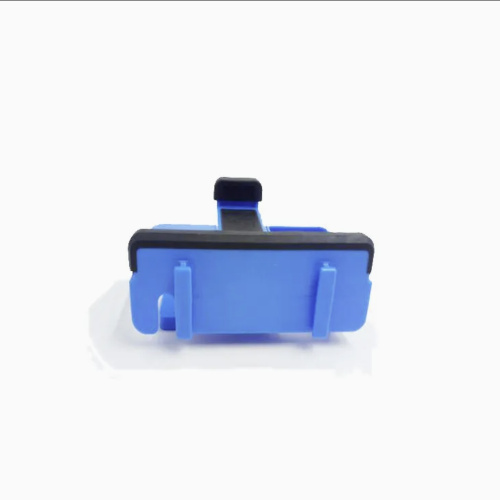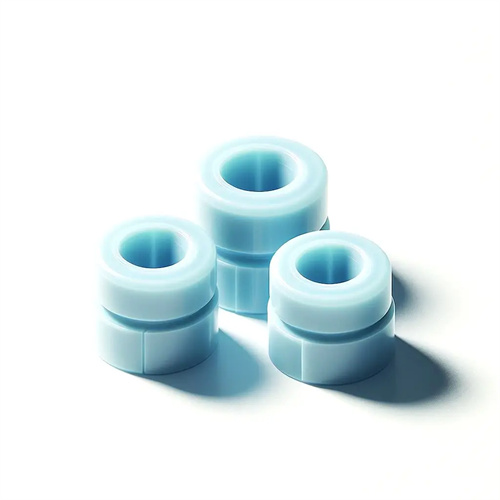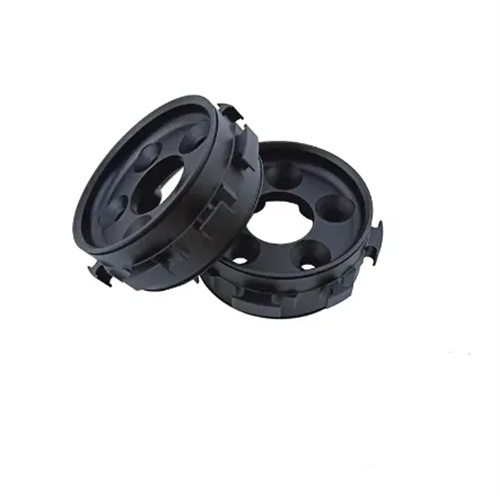On-site treatment methods for light spots on matte surface injection molded parts
Shining spots on matte-finished injection molded parts are a common defect that affects the appearance quality. They manifest as localized shine or uneven gloss. On-site treatment requires rapid investigation of the cause and targeted measures based on a combination of process parameters, mold conditions, and raw material characteristics. Prioritizing and adjusting injection molding process parameters is the primary step in on-site treatment, as process fluctuations are one of the main causes of shining spots. First, adjust the melt and mold temperatures. If the melt temperature is too high, plastic degradation will produce small molecules, resulting in shiny spots on the matte surface. If the temperature is too low, the melt will have poor fluidity, leading to uneven filling and localized stress concentration, which can cause shining spots. Try lowering the melt temperature by 5-10°C (for PP material, for example, from 220°C to 210°C) while simultaneously increasing the mold temperature by 10-15°C to allow the melt to fill slowly and cool evenly, reducing stress concentration.

Secondly, optimize the injection speed and pressure. Excessively fast injection speeds can cause turbulence in the mold cavity, entraining air or causing localized overcompression, resulting in shiny areas. Excessively slow injection speeds can lead to insufficient filling, creating cold spots that contrast with the matte finish. A staged speed adjustment approach can be employed on-site. When filling into areas prone to shiny spots (e.g., from 50mm/s to 30mm/s), the speed can be reduced appropriately (by 10-15%) to ensure the melt adheres closely to the mold cavity surface and avoid localized shrinkage and shiny areas caused by insufficient pressure. For example, when molding a matte cover plate, if shiny spots appear at the edges, the speed can be slowed down during the final 10% of the filling phase to ensure smooth filling of the cavity and minimize the effects of turbulence.

Checking and cleaning the mold is a key measure to solve the problem of light spots. Contamination or damage to the mold surface often leads to localized gloss abnormalities. First, clean the oil stains, mold release agent residue, or plastic deposits on the surface of the cavity: these impurities will form bright spots on the surface of the product. Use a special mold cleaner (such as alcohol or descaling agent) and a soft cloth to wipe the cavity. Matte areas should be cleaned carefully to avoid scratching the surface. If there are slight scratches or wear on the cavity surface, lightly polish with fine sandpaper (800-1200 grit) to restore the matte consistency. For severely damaged cavities, return to the processing workshop for re-sandblasting or etching. Second, check whether the exhaust slots are blocked. Blocked exhaust slots can cause air to be trapped, forming locally shiny bubbles. Use a copper wire brush to clean the exhaust slots to ensure smooth air discharge.

Adjusting the raw material condition and molding environment can also effectively reduce the occurrence of light spots. Impurities or moisture in the raw materials are common contributing factors. Raw material cleanliness should be inspected on-site. If any off-color particles or dust are detected, the hopper should be replaced and the raw materials screened immediately. Highly hygroscopic plastics (such as PA and PC) require re-drying (for example, PA66 should be dried at 80°C for 4 hours) to prevent moisture evaporation during the molding process, which can cause bubbles and light spots. Furthermore, the molding environment humidity should be controlled between 50-60%. Excessively high humidity can cause the raw materials to absorb moisture, while low humidity can easily lead to static electricity attracting dust, both of which can affect the surface quality of the finished product. For matte finishes with added masterbatch, ensure that the masterbatch is evenly dispersed. The screw speed can be increased appropriately (by 10-20%) to enhance the plasticizing effect and avoid localized shiny spots caused by poor dispersion.

Combining temporary remedies with long-term preventive measures is an important principle for on-site treatment. If light spots only appear on the non-exterior surface of the product, local sanding (lightly grinding the light spot area with fine sandpaper) can be used to reduce the gloss difference to meet non-strict usage scenarios. For slight light spots on the exterior surface, you can try spraying a matte repair agent to cover the defect. However, a fundamental solution requires optimization of both the mold and the process: in the mold, add venting grooves (depth 0.01-0.02mm) in areas prone to light spots and optimize the uniformity of the matte texture; in the process, establish a stable parameter range (such as melt temperature fluctuation ≤±3°C) and regularly check the drying status of the raw materials. By combining rapid on-site adjustments with long-term improvements, the light spot problem of matte surface injection molded parts can be effectively controlled and the product qualification rate can be improved.
